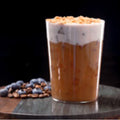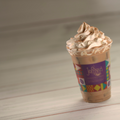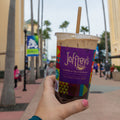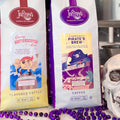
Coffee
A (Coffee) Day In The Life: The Pour Over
Ever wondered how our Head Roastmaster Chris enjoys his coffee throughout the day?
Join us for our third installment of a (coffee) day in the life of Roastmaster Chris and join him as he makes his way through the day, one cup of coffee at a time! Today, we'll be joining Chris as he makes himself a cup of Pour Over coffee. If you have been following this series, you may now know that it is important to always brew your coffee with fresh coffee. Roastmaster Chris prefers to start with whole bean, but regardless of your grind preference, it's recommended to store your coffee in an airtight container, such as our Airscape® Coffee Storage Canister. This stainless steel canister will preserve your Joffrey’s artisan roasts by keeping air out to protect freshness and flavor. His favorite coffees to brew using this method are our Origin Kenya and Origin Costa Rica. After grinding down his fresh coffee, Roastmaster Chris enjoys making a cup of coffee using another one of his favorite brewing methods, the Pour Over method.Not familiar with the Pour Over method or looking for some new tips and tricks? Join Roastmaster Chris for a step by step tutorial!
- Take 2 ounces of freshly ground coffee and pour into the cone filter
- Bring water to boil then set aside for two minutes
- Never use boiling water to brew coffee. Ideally, the water should be around 200 degrees (boiling water will usually reach this temperature after resting for two minutes).
- Slowly pour the water over the coffee grounds, stopping once you are 3/4 of the way to the top
- As you pour the water over the grounds, a crust will form. The crust is the the hot water reacting to the freshly ground coffee.
- Once the crust forms, use the remaining water from the kettle to break the crust
- Ensure all grounds are saturated with water
- Once all the coffee has dripped into your container below, the coffee is ready to be poured and served!






Leave a comment
Please note, comments must be approved before they are published.